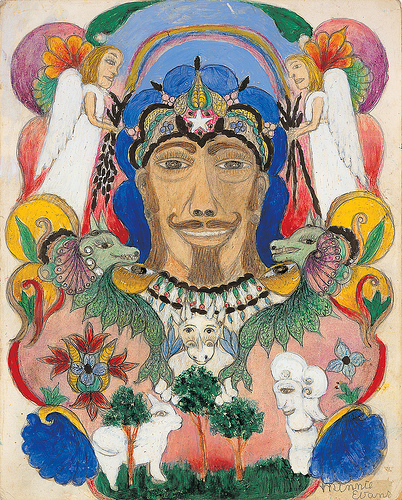
Objective: Students will use symmetry in their writing.
Materials:
- Paper
- Writing utensils
Introduce: Explain the concept of symmetry to your students, and introduce the artist, Minnie Evans. Evans was an artist who was deeply interested in symmetry: her work often centers around one human face, surrounded by plants, animals, and fantasy creatures. Her pieces were often spiritually inspired.
Ask:
- What is symmetry? Asymmetry?
- How could a piece of writing be symmetrical?
- In Evans’ work, what is the importance of the asymmetrical portions?
Activity:
- Have your students think about symmetry in terms of language arts.
- Have students make a piece of writing, either poetry or prose, symmetrical. For example, a poem might have a set number of words in each line, or a piece of prose might alternate points of view, beginning with one, the middle being another, and the end returning to the first.
- Have your students include something in their writing that is not symmetrical—a word or phrase if it’s poetry, a section if it is a longer prose work. They should have a reason for making that part stand out more.
National Standards:
- VA:Re7.2.4a Analyze components in visual imagery that convey messages.
Share your artwork with us on social media @milwaukeeart #MAMLearn or email pictures to teachers.mam.org. We’d love to see your creations!
